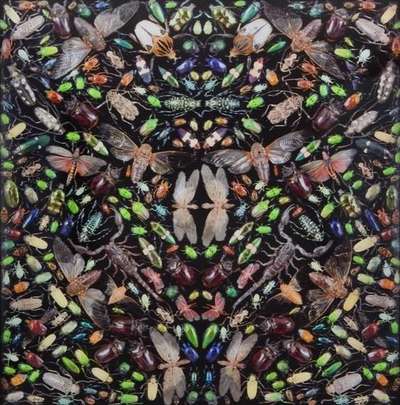
Phlegyas

Phlegyas
Signed Print
Damien Hirst
Price data unavailable
AAGR (5 years) This estimate blends recent public auction records with our own private sale data and network demand.
There aren't enough data points on this work for a comprehensive result. Please speak to a specialist by making an enquiry.
Medium: Lenticular
Edition size: 50
Year: 2016
Size: H 75cm x W 75cm
Signed: Yes
Format: Signed Print
Track this artwork in realtime
Watch artwork, manage valuations, track your portfolio and return against your collection
Track auction value trend
Auction Results
| Auction Date | Auction House | Location | Hammer Price | Return to Seller | Buyer Paid |
|---|---|---|---|---|---|
| October 2024 | Phillips London | United Kingdom |
Meaning & Analysis
Phlegyas is a lenticular print by the critically acclaimed, contemporary artist, Damien Hirst. Produced in 2016, this digital print on PETG plastic depicts a magnificent arrangement of colourful insects in a large circle shape with a thick black border. Colour exudes from the print as the various insects are all different shapes, sizes and colours.
Phlegyas is part of Hirst’s Entomology Works series, a series of prints which are made using the advanced lenticular printing technique. The lenticular technique creates the illusion of depth, making the insects stand out from the print, appearing to be multi-dimensional. The prints in the series are each named after phases and characters in Dante Alighieri’s The Divine Comedy, a long Italian narrative poem from the 12th century.
Hirst has often explored using insects in his artworks, and they have become a trademark feature of the artist’s visual language. Other works which feature insects are the Kaleidoscope Paintings, in which hundreds of butterflies are arranged into spectacular kaleidoscope patterns. Hirst was drawn to insects because to capture the fragility of life and can be used to explore themes of life and death which interest the artist greatly. Hirst argues that insects are beautiful, even when they are dead, which makes these prints both “beautiful and horrific at the same time.”
Damien Hirst, born in Bristol in 1965, is often hailed the enfant terrible of the contemporary art world. His provocative works challenge conventions and his conceptual brilliance spans installations, paintings, and sculptures, often exploring themes of mortality and the human experience. As a leading figure of the Young British Artists (YBA) movement in the late '80s, Hirst's work has dominated the British art scene for decades and has become renowned for being laced with controversy, thus shaping the dialogue of modern art.
